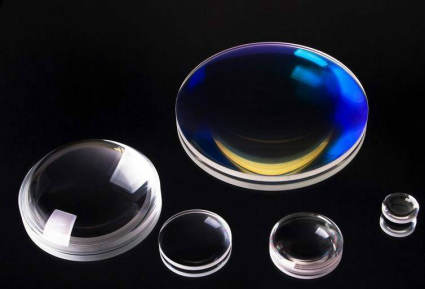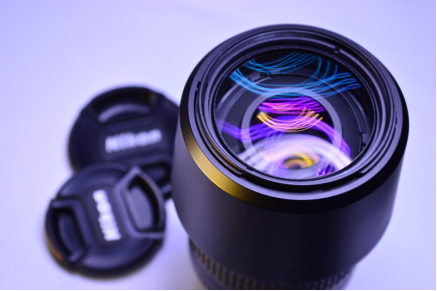- EN
 企业公众号
企业公众号 微信客服
微信客服
 企业公众号
企业公众号 微信客服
微信客服It has been found that in the process of optical lens coating, the formation of coating does not start with crystal particles attached to all crystallographic lattice points on the substrate surface, but always goes through "nucleation", that is, the process of nuclear "growth" and adjacent film formation. In the study of the film formation process of optical lens under ultra-high vacuum condition, it is found that the film on the lens always goes through a "incubation period" without sediment at the beginning of the formation, and after the "incubation period", some discrete growth centers are formed on the surface of the substrate randomly, which have a crystal structure, namely "crystal nucleus". When the deposition process continues, no new crystal nuclei are produced, but some small crystalline islands gradually grow in and form film adjacent to each other. And then again, the core, growth, contiguous film formation. The nucleation of optical lens is the process from "incubation period" to "small crystal nucleus".

The nucleation of optical lens coating is a complex stage, which is affected by many factors. In addition, it is closely related to other stages of coating formation. Color has an important impact on the quality and performance of dry coating. Therefore, the study of nucleation process has been a very active field, and many theories have emerged.

Optical lens coating is formed by some condensation process after the foreign molecules, atoms or atomic clusters reach the surface of the substrate. Then the nucleation process of optical lens coating can be divided into three types:
1.Three dimensional nucleation growth model (island growth)
The growth pattern is also called Weber island type. When the coating of optical lens is formed in this way, firstly, some atoms adsorbed on the surface of the substrate migrate to form atomic clusters, that is, the nucleation of the film. When the size of the nucleus reaches a certain critical value, that is, a stable core, the atoms flying from the evaporation source to the substrate directly condense into island structure on the core, and then these islands are connected together to form a continuous coating, so it is called island growth mode. This kind of film growth is usually in the case of a large interaction between the atoms of vacuum coating. In addition, when the interaction force between the coating atoms and the atoms of the substrate is a little small, this island growth mode will appear to form the coating layer.
2. Monolayer growth model (lamellar growth)
The monolayer growth model (Frank Vander Merwe type), also known as Frank vandermov type, is a layered growth model. This type of growth is the ideal epitaxial growth in the industry. As homogeneous epitaxy, if heteroepitaxial growth is heteroepitaxial, after introducing mismatch dislocation, epitaxial growth will be formed. Before the crystal mismatch dislocation occurs, the deposited atoms are arranged according to the crystal synchronization of the substrate. This structure is usually called pseudo structure. This kind of film growth is usually in the optical lens coating, the interaction force between the deposited atoms and the substrate atoms is very large, which is greater than the polymerization force between the deposited atoms, the deposited atoms will form a two-dimensional thin layer accumulation, and form a layered coating growth mode.
3. Nucleation and growth patterns on monolayer (layer Island mixing)
The single layer nucleation growth model (stranki krastanov type), also known as the stransky krastanov type, is a layer Island mixed model. When the optical lens coating is formed in this way, a single layer with pseudo structure (layer growth) is formed on the substrate, and then three-dimensional nucleation growth (island growth) is formed on the single layer film. In this mode, the combination of material and substrate is less. This kind of film growth is generally formed in this way when the interaction force between the substrate atoms and the deposition atoms is large, and the cohesion of the deposition atoms is also large.
Optical lens coating can be used for anti reflection or anti glare treatment, such coating can effectively prolong the service life of the lens, at the same time, the convenience and protection of optical lens coating are also excellent. Coated with appropriate materials can help the lens resist scratches and stains, and has the advantages of reducing glare and additional safety factor. Using optical lens coating equipment to eliminate glare and reduce reflection, lens coating is a good existence for people who use computer work, often drive and use digital media products in office environment.